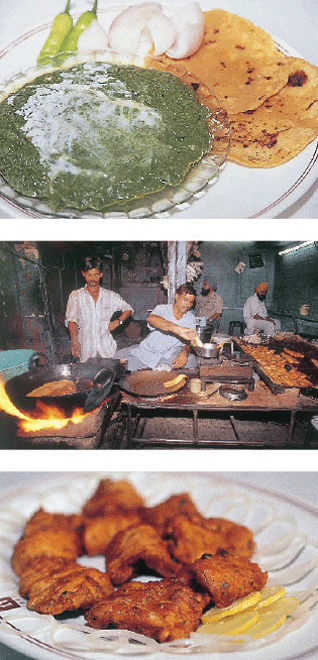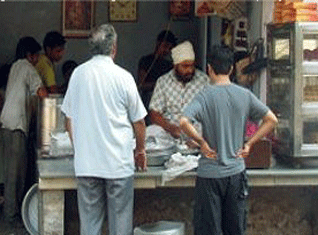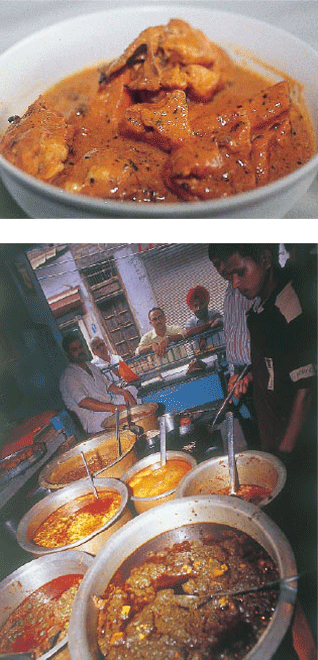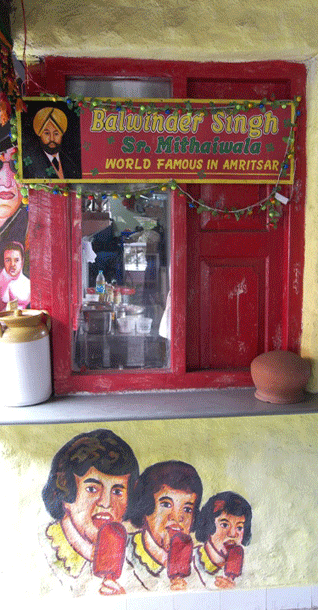Cuisine
Tastes of Amritsar
by ANOOTHI VISHAL
It's late night by the time we manage to make our way out of the Darbar Sahib (popularly known as The Golden Temple) in Amritsar, Punjab.
It's a place you don't really want to leave. But as we stumble out, we feel particularly blessed. Clutched tightly in my hand, after all, is a piece of faith from the very sanctum sanctorum: two big sugar roundels, patashas, that the bhais gave my daughter We've already nibbled on one, along with the karrah parshad, thickened semolina "cakes", aromatic with pure ghee.
If our first taste of Amritsar comes imbued with a large dose of faith, the subsequent foodie journey is no less spiritual: each morsel that we taste in this city of amrit, the nectar of immortality, is flawless.
The French have a term called terroir, connoting the land, air and water, to describe the unique tastes of their wines from different estates even within the same country. In Amritsar, it is only terroir that can account for the magnificence of the food that we encounter.
What else can be behind all those gourmet offerings that we come across at the most insignificant of street stalls and the poshest of hotels with equal felicity?
City in flux
Take a walk around the old, walled city (around the Darbar Sahib) and you will find that almost every shop (selling sweets, paapads and wadis or sundried dumpling made from lentils, flavoured with a variety of ingredients, including guava and pomegranate seeds), chaat and lassi. Dhabas claim to be the oldest in the city. Founding dates are proudly mentioned on name boards: To be old in this city is indeed a matter of pride.
The modern Amritsar, on the other hand, despite its history and religion, is a city in flux. Rubbing shoulders with these venerable institutions are the new shrines of eating out: McDonald's, KFC and the like. Three malls have sprung up in the city in as many years and well-to-do Amritsaris are thronging these, enjoying the pleasures afforded by assembly-line burger joints and swanky dhabas selling "traditional fast food"; from Bombay bhel and pani-puris to the ubiquitous butter chicken and dal makhani.
Ista, the city's first and only five-star hotel, is a business property with an excellent spa (after all, it is sister property to Ananda in the Himalayas) that brings in a lot of crowd from Delhi and around. As such, it is as much a symbol of the new Amritsar as the malls are. Yet, it is possible to get some of the best of old Amritsar within its glassy walls, as we discover, halting in our gourmet journey of discovery here.
The all-day diner could have been the coffee shop of choice for those looking for some comfort bites but, if you are in Amritsar, eat as the locals do and you will be amply rewarded.
Fluffy kulchey-chhole for breakfast is a must, washed down with a tall glass of lassi.
And, at lunch, you can wipe off the last of your meat curry with thick potato-stuffed kulcha bread.
Surprisingly, the fluffiest, thickest of these typically Amritsari breads are to be found at the coffee shop, a tribute to the research gone into the kitchen. It is also a good idea to sample the Amritsari fish at the restaurant, which sells a refined (and much better) version of what you get on the streets commonly.
But contrary to one's expectations of the city being full of tandoori fowl and fish, Amritsar, at least old Amritsar, is strictly vegetarian. The walled city around the Golden Temple and the historic Jallianwallah Bagh is full of dhabas and shops catering strictly to vegetarians. Bharawan Dhaba, or Brothers' dhaba as it would be in English, is a turn-of-the-20th century institution that has become a bit touristy with plastic chairs and tables and takeaway menu cards, but is excellent nevertheless for a wholesome meal.
Old is Gold
Established by two brothers, though the families have since split (the rival family now runs another dhaba adjacent to the original), this is perhaps one of the oldest restaurants on the subcontinent.
In this foodie city, folk would bring their flour and ghee and get the cooks of this dhaba to make their favourite tandoor-baked breads and slow-cooked black urrad dal, since individual homes didn't always have a clay oven. Today, the dal makhani here is legendary: slow cooked, in a deep, heavy-bottomed vessel, overnight.
In Amritsar, it is impossible to do without lassi, topped typically with a lashing of thick, fresh cream. At street shops and halwaai joints, this is usually served in tall steel tumblers and, though there are several excellent recommendations, the best place for Amritsari lassi is at Ahuja Lassi.
This place is special because, in the mornings, they also serve kesar lassi or saffron lassi. The yoghurt is set with strands of saffron dissolved in milk. The resultant curd is thus flavoured with saffron and is used to make the most delicious drink.
Another good breakfast option would be to have this lassi with some sticky, crisp jalebis, another typically Amritsari treat. The best jalebis in the old town are to be found in Katra Ahluwalia, though getting into the narrow bylanes atop a rickety rickshaw may be a feat only for the adventurous.
There are several street food legends in the city when it comes to fish and chicken cooked in the tandoor as also the typical "tavaa meat" smeared in a thick masala. For these, make your way outside the walled city, towards the railway station and to the newer commercial hubs of Lawrence Road, et al. The typical Amritsari fish is really fresh-water fish, filleted, and coated in a light batter of chickpea flour and salt. The seasoning of ajwain, rosemary, is all important here. It was - and remains - a common street snack, fried in a hot wok of smoking mustard oil, fresh.
The best fish in Amritsar, it was argued, was the makhan fish, ostensibly soft as butter on the inside of the batter-coating, sold at various shop near the railway station.
Surjeet Singh, who had a shop there, claims to be the originator of the recipe. In the late 1980s, he was "discovered" by the BBC, then making a film on Amritsar, and consequently by the likes of Madhur Jaffrey and finally Bollywood, even as he made his way from that single fish shop to the posh environs of a restaurant at Lawrence Road. Today, Surjeet Singh's is the most popular restaurant in Amritsar, also serving some tender and succulent tandoori chicken as well as mutton tikkas done differently from anywhere else. The tikkas, in this case, are first tandoor-cooked and then tavaa-fried with a secret masala that only Surjeet Singh and his family ostensibly know.
They are delicious, to say the least.
There is also Beera chicken - or tandoori chicken - the way it is meant to be, unsoiled by edible, orange colour. All in all, if you like hearty, rustic flavours, there can be no city to match Amritsar. It is, after all, a question of terroir.
Conversation about this article
1: Aman (California, U.S.A.), July 10, 2010, 2:29 PM.
I hate to admit it but my mouth was watering as I read this article!






